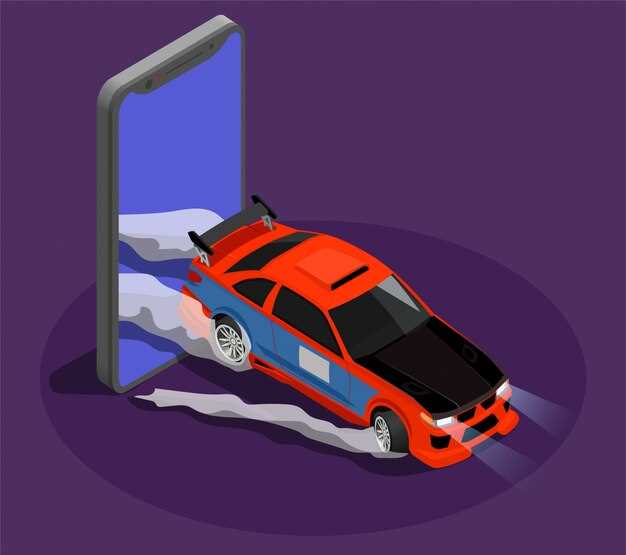

The relationship between cold weather and vehicle performance is often overlooked, particularly when it comes to the braking system. As temperatures drop, various components of your vehicle’s brakes can be affected, leading to potential risks for drivers. Understanding how weather influences your braking efficiency is crucial for maintaining safety on the road.
In colder climates, the materials used in brake pads and discs may react differently, resulting in altered friction levels. Cold temperatures can cause brake fluid to thicken, reducing its effectiveness. Additionally, ice and snow can create hazardous driving conditions that further challenge a vehicle’s braking capabilities. Regular care for your braking system is essential during these months to ensure that your vehicle responds reliably in emergency situations.
As drivers, it is our responsibility to be aware of how changing weather patterns affect our vehicles, especially during winter. Taking proactive steps to inspect and maintain the braking system can make a significant difference in performance and safety. By understanding the impacts of cold weather, we can make informed decisions that protect not only our vehicles but also the safety of all road users.
How Cold Temperatures Affect Brake Performance
Cold weather poses significant challenges to vehicle safety, particularly concerning the braking system. When temperatures drop, the effectiveness of brake components can diminish, leading to potentially hazardous driving conditions. One major factor is the increased viscosity of brake fluid. In colder climates, brake fluid can become thicker, which may result in slower brake response times and a delay in stopping distances.
Furthermore, cold temperatures can cause the rubber seals and hoses within the braking system to harden and lose their flexibility. This deterioration can lead to leaks or decreased pressure in the braking system, compromising overall performance. Regular care and maintenance of these components are essential to ensure longevity and reliability, especially in regions with extreme winter weather.
The interaction between cold surfaces and tire friction also plays a crucial role. As temperatures fall, road conditions may deteriorate due to ice or snow, drastically affecting the traction between tires and the driving surface. When brake systems are engaged on slippery surfaces, the risk of skidding increases, making it vital for drivers to adjust their braking habits accordingly.
Lastly, the impact of cold weather extends to the performance of brake pads and rotors. Many materials used in these components can become less effective at low temperatures, leading to reduced stopping power. Ensuring that brake pads are appropriate for colder conditions and are replaced regularly can enhance braking efficiency and safety during winter months.
Best Practices for Brake Maintenance in Winter Conditions

Winter weather presents unique challenges for your vehicle’s braking system. The cold temperatures can affect the performance and safety of your brakes, making it essential to take special care during these months. Here are some best practices to ensure your brakes remain effective in harsh winter conditions.
1. Regular Inspections: Frequent inspections of your brake system should be a priority in winter. Look for signs of wear, such as faded brake pads or fluid leaks. Ensure that brake lines are intact and that there are no obstructions caused by ice or snow.
2. Quality Brake Components: Invest in high-quality brake pads and rotors that are designed to withstand cold weather. These components should be constructed from materials that offer good performance even in low temperatures. Consult with a professional if you’re unsure about the best options for winter driving.
3. Brake Fluid Maintenance: Ensure that your brake fluid is at the optimal level and that it meets the necessary specifications for winter use. Humidity can cause moisture to build up in the fluid, leading to decreased braking efficiency. Bleeding your brake system can help remove any water accumulated in the fluid.
4. Keep Brakes Clean: Snow and road salt can accumulate on your brakes and reduce their efficiency. Regularly clean your brake components to prevent corrosion caused by these elements. This is especially critical for vehicles exposed to harsh winter roads.
5. Test Your Braking System: Before facing winter conditions, test your brakes to ensure they are functioning properly. Pay attention to any unusual noises or vibrations when braking, and seek professional assistance if you notice anything amiss. A well-functioning brake system is key to maintaining safety in cold weather.
6. Adapt Your Driving Style: During winter months, adjust your driving habits to account for slippery roads. Avoid sudden stops and sharp turns to prevent undue stress on your braking system. This not only extends the life of your brakes but also enhances your safety on wintry roads.
By following these best practices, you can ensure that your vehicle’s braking system remains reliable throughout the winter season, providing you with the confidence and safety needed to navigate challenging weather conditions.
Signs of Brake Issues to Watch for During Cold Weather

Cold weather can significantly impact your vehicle’s braking system, making it essential to pay attention to specific signs that may indicate problems. The lower temperatures can lead to various issues, and being vigilant can prevent costly repairs and ensure your safety on the road.
One key sign to watch for is an unusual noise when applying the brakes. If you hear grinding, squeaking, or squealing sounds, it could indicate worn brake pads or other mechanical issues exacerbated by the cold. Additionally, if the braking system feels spongy or less responsive, this may suggest air in the brake lines or moisture freeze, which can affect brake fluid performance.
Another critical sign is the presence of a longer stopping distance. If you notice that your vehicle takes longer to come to a complete stop, it may be due to frozen components or diminished brake effectiveness in cold conditions. Furthermore, if the brake pedal feels hard or sticks when pressed, it could indicate a problem with the brake booster or the vacuum lines, which are often more noticeable in lower temperatures.
Pay attention to any vibrations or shuddering sensations when braking, as these can indicate warped rotors–a condition that can worsen in cold weather. Lastly, take note of brake warning lights on your dashboard. If these lights illuminate, it is crucial to address the issue immediately, as cold weather can amplify existing problems.
Proper care and regular maintenance of your braking system can mitigate many of these issues. However, remaining vigilant for these signs during cold weather is vital to ensure your vehicle remains safe and reliable on the road.







